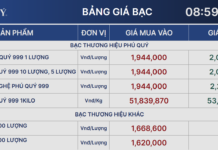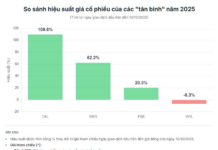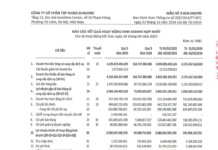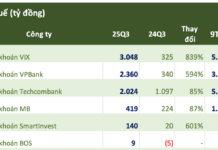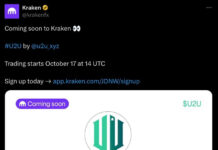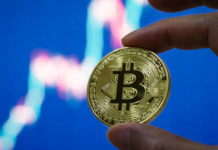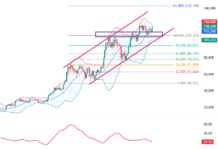 |
Mr. Heng Koon How, Head of Market Strategy, Global Markets and Economics Research Group, UOB
|
Mr. Heng Koon How, Head of Market Strategy at UOB’s Global Markets and Economics Research Group, shared his insights on the long-term outlook for gold.
Since its breakthrough above $2,000 per ounce in late 2023, gold has been on a remarkable run. Despite recent global market volatility caused by the unwinding of yen carry trades, gold has remained a stable haven. Gold prices have barely budged from the $2,500 per ounce mark, a 25% increase from the $2,000 level in January.
Gold is showing promising potential, with prices possibly surging to $2,700 per ounce by mid-2025 and potentially reaching $3,000 per ounce in the longer term.
Two key factors have contributed to this trend since last year: safe-haven demand amid geopolitical turmoil and strong central bank buying. A third factor, anticipated global interest rate cuts, is expected to further boost gold demand in the coming months.
Geopolitical Turmoil Fuels Safe-Haven Gold Buying
The first driver of gold prices is the increasing turmoil in the global geopolitical landscape, with ongoing conflicts in Europe and the Middle East. This geopolitical uncertainty has supported gold purchases as a safe-haven channel.
Along with the depreciation of local currencies, there have been industry reports of retail investors aggressively buying physical gold products such as bars and bullion as a hedge against escalating tensions.
Strong Gold Allocation by Emerging Market and Asian Central Banks
The second factor is the substantial gold allocation by emerging market and Asian central banks. China has grabbed global attention with its significant gold purchases. According to the World Gold Council’s latest update, as of May 2024, China’s official gold holdings have risen to approximately 2,300 tons, close to 5% of its total reserves. This represents an increase of about 20% from the 1,900 tons held just two years ago in 2022.
While recent news reports suggest that the People’s Bank of China (PBOC) has halted gold purchases due to higher prices, it’s noteworthy that, in the past, the PBOC has consolidated its gold-buying reports by providing “aggregate” updates months later.
Overall, it’s notable that emerging market and Asian central banks, on average, hold less than 5% of their balance sheets in gold, compared to developed market and European central banks, which typically hold 10% or more of their reserves in gold.
For instance, the Federal Reserve of the United States currently holds approximately 8,100 tons of gold, amounting to roughly $625 billion at the current spot price of around $2,400 per ounce. This accounts for about 9% of the U.S.’s total balance sheet of $7.2 trillion.
With escalating risks of global trade conflicts and sanctions, emerging market and Asian central banks have a strong incentive to catch up with their developed market counterparts and allocate more reserves to gold.
In fact, a recent World Gold Council survey of global central banks concluded that a primary reason for emerging market central banks to allocate more to gold is that it is seen as immune to USD payment risks and sanctions.
Fed’s Rate Cut Cycle Will Positively Impact Gold Investments
In addition to the two positive drivers mentioned above, a third factor is expected to boost gold demand in the coming months.
With inflation in the U.S. recently showing signs of easing and a weakening jobs market, there is a consensus that the Fed may initiate a rate-cutting cycle starting in September 2024. Specifically, we can anticipate the Fed to cut rates by 25 basis points at each of the upcoming Federal Open Market Committee meetings in September and December, followed by 100 basis points throughout 2025, at a pace of 25 basis points each quarter.
Given the recent global market volatility, market expectations have shifted towards an even larger rate cut from the Fed. Long-term Treasury yields have declined, with the benchmark 10-year U.S. Treasury yield dropping from 4.5% in Q2 to just below 4% in August.
This anticipated rate-cutting cycle by the Fed, coupled with lower interest rates and declining long-term bond yields, will be a significant positive catalyst for gold prices.
Previously, gold and gold-related investment vehicles were constrained by high-interest rates. Unlike debt instruments or equity investments, gold does not pay a regular interest rate or dividend. Therefore, with interest rates and long-term yields as high as 5% previously, the opportunity cost of investing in gold was considerable. This opportunity cost is expected to decrease as the Fed begins cutting rates, and we anticipate institutional investors to continue buying gold in the coming months.
One of the primary ways institutional investors buy gold is through gold-backed exchange-traded funds (ETFs). Holdings in such ETFs are expected to rise again in the coming months as institutional buying resumes.
Gold as a Portfolio Diversifier
The main motivation for long-term investors to allocate a portion of their portfolios to gold is its strong track record as a portfolio diversifier. Specifically, gold has proven to be a relatively stable haven during recent market volatility triggered by the unwinding of yen carry trades.
Despite the widespread turmoil and intraday movements in global stock markets in early August, gold prices remained relatively stable around the $2,400 per ounce level before surging higher to the recent $2,500 per ounce mark.
During the early August turmoil, gold’s three-month volatility showed a moderate increase from 14% to 16%, even as the market’s “fear gauge,” the S&P VIX, spiked above 60%.
With multiple factors driving demand, gold could reach $2,700 by mid-2025. While it may be premature to assess, a further long-term increase to $3,000 is not unrealistic.
Han Dong
Chinese citizens flock to buy 280 tons of gold, realizing real estate and stocks are no longer a good investment channel
Regardless of the global decline in demand for gold, the purchasing power of Chinese citizens has propelled the price of gold to surpass the $2,000 per ounce threshold in 2023.

